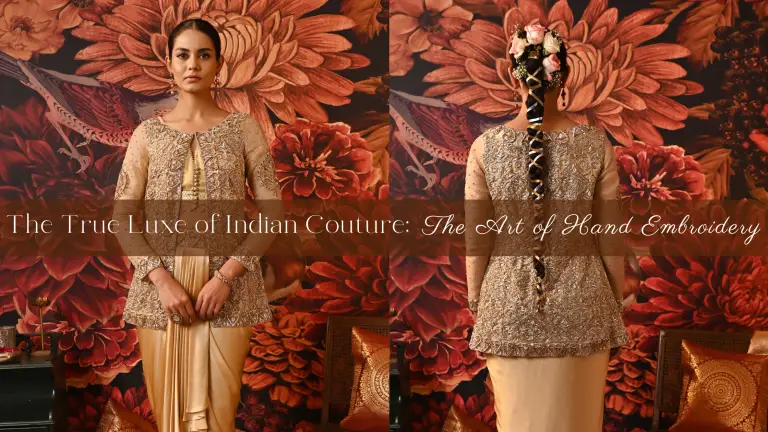The words “culture,” “effervescence,” and “sparkling” are frequently used to describe India. India is home to some of the world's most exquisite embroidery, including the delicate Chikankari of Lucknow, the vibrant Pipli of Odisha, and the subtle beauty of Kaudi work from Karnataka. The careful, protracted process of producing embroidery results in a timeless symphony of vibrant colors and intricate patterns that cannot be replicated. Yes, in all senses of the term, that is luxury.
Numerous variations of Indian handicraft culture exist, but its embroideries continue to have a prominent place. The intricate needlework and other handicrafts have a long history that dates back far beyond our time. They originate from many different places. Self- and status are expressed through this embroidery. The distinctions that define a community's sub-communities and social standing within it are created and maintained by differences in style. The stories and knowledge passed down from ancestors to artisans are plentiful.
The Development of Embroidery
The country of India has a rich history and tradition that stretches back to 2500 B.C., which is reflected in its textile industry. The artisans stitch the artistic weave of India by passing down their knowledge and skills through the generations to portray India's traditions and culture. The distinctiveness of embroidery skills is what characterizes the Indian clothing and fashion business. The genuine richness of Indian couture is found in the tiniest gems, pearls, and beads that are woven together intricately and securely in strands of gold and silver to create the most beautiful paintings by a needle.
Designers frequently utilize embroidery for both traditional couture and Western clothing because of their adaptability. Unquestionably, one of India's most significant industries is embroidery, and because of the organization, the nation has been able to set up export facilities across the nation that sell hand-woven fabrics to countries like the Middle East, the UK, and Indonesia, to mention a few.
Types of hand embroidery
- The Aari Embroidery: Specifically designed Aari needles, which resemble crochet hooks but are much sharper, are used to make this needlework by hand. They create motifs like peacocks and flowers using a technique equivalent to chain stitching. They frequently embellish Aari with sequins, dabka, and beads to give the stitching an opulent, regal feel.
- The Gota Embroidery: Silver and gold required motifs are manually stitched or hemmed into gota applique work. First, this elegant yet understated needlework was transferred to the cloth from a tracing sheet. The design is then sewn as instructed, typically on georgette, chiffon, or similarly airy materials.
- The Zardozi Embroidery: Gold, silver, or other metallic-colored threads are used to hand-craft the oldest and most regal Mughal-inspired embroidery. The embroidery is made with sequin or bead decorations and is created on materials like heavy silk and velvet. The most typical motif found in different satin, running & lay stem stitches includes geometrical, floral, and animal designs.
Well, the Indian “karigars” are the best among all. With the workmanship of around 45 million citizens around the country, they are the true luxe of Indian Culture and the art of hand embroidery.






